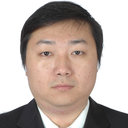Outcome comparison of two methods of pharyngeal cavity reconstruction in uvulopalatopharyngoplasty.
Keywords
Abstract
CONCLUSIONS
The efficacy of uvulopalatopharyngoplasty (UPPP) can be achieved without application of an apposition suture of the palatopharyngeal arch and the palatoglossal arch.
OBJECTIVE
To compare the outcomes of two different methods of pharyngeal cavity reconstruction in UPPP.
METHODS
Forty-eight patients with obstructive sleep apnoea syndrome (OSAS) underwent UPPP (uvula-preserving). A classical pharyngeal cavity reconstruction was performed in 24 patients in group one, with plastic suture of the inferior nasopharynx and exposure of the tonsillar fossa in 24 patients in group two. The parameters evaluated were the subjective symptom score, the Epworth Sleepiness Scale (ESS), and polysomnography result. The mean operating times and complications of the post-operative pharyngeal cavity were investigated.
RESULTS
No significant difference was observed in surgical success (p = 0.54), subjective syndromes (snoring, sleep apnoea, morning headache, daytime sleepiness) (p = 0.16, 0.36, 0.79 and 0.52), ESS (p = 0.41), apnoea-hypopnoea index (AHI) (p = 0.32), and minimum SaO2 (p = 0.13) between the two groups. In group one, the mean operating time was 54.72 ± 6.52 min, 11 suture dehiscence (45.8%), and five scar hypertrophy of the pharyngeal wall (20.8%) were observed post-operatively; while in group two was 38.78 ± 5.75 min, no suture dehiscence resulting from suture cutting of tissue, three scar hypertrophy were observed (12.5%).


